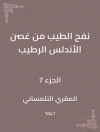World War II was the largest and most violent armed conflict in the history of mankind. Highly relevant today, World War II has much to teach us, not only about the profession of arms, but also about military preparedness, global strategy, and combined operations in the coalition war against fascism. This book follows military operations of the US Army in France from 16 December 1944 to 25 January 1945.
In his political testament Mein Kampf (‘My Struggle’) Adolf Hitler wrote, ‘Strength lies not in defense but in attack.’ Throughout World War II, attempts to gain or regain the initiative had characterized Hitler’s influence on military operations. Thus, when the military situation in late 1944 looked darkest on the Western Front, an enemy offensive to redress the balance on the battlefield—and thereby cripple or delay the Allied advance—should have come as no surprise.
Hitler’s great gamble began during the nights of 13, 14, and 15 December, when the initial assault force of German armor, artillery, and infantry gradually staged forward to attack positions along the Belgian-German-Luxembourg border. This mustered force, with more than 200, 000 men in thirteen infantry and seven panzer divisions and with nearly 1, 000 tanks and almost 2, 000 guns, deployed along a front of 60 miles—its operational armor holdings equaling that on the entire Eastern Front. Five more divisions moved forward in a second wave, while still others, equipped with at least 450 more tanks, followed in reserve.
On the Allied side the threatened American sector appeared quiet. The 15 December daily situation report for the VIII Corps, which lay in the path of two of Hitler’s armies, noted: ‘There is nothing to report.’ This illusion would soon be shattered.
Sobre el autor
Roger Cirillo is a military historian and analyst specialized in twentieth century.












